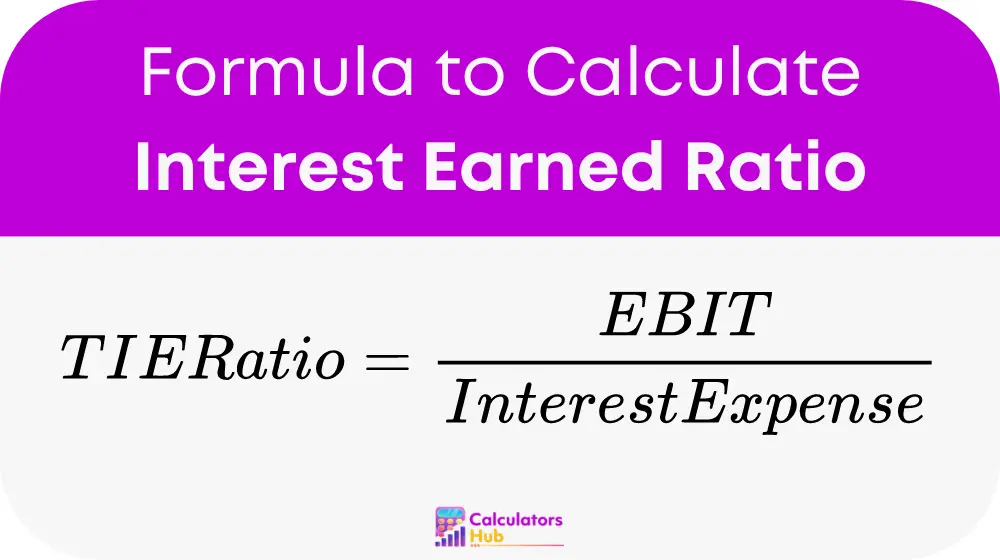The Interest Earned Ratio Calculator provides a quick and accurate measure of a company’s financial health regarding its interest obligations. By calculating how many times a company can cover its interest expenses with its operating income, this tool aids in assessing risk and making informed financial decisions.
Importance
A robust Interest Earned Ratio indicates a company’s good health, suggesting that it generates sufficient earnings to cover its interest expenses multiple times. This measure is particularly vital for evaluating companies burdened with debt, where interest coverage capabilities are critical.
Formula of Interest Earned Ratio Calculator
The formula for calculating the Interest Earned Ratio is straightforward:

Where:
- EBIT (Earnings Before Interest and Taxes) represents the income a company makes before accounting for interest and taxes. It’s calculated as follows:
EBIT = Net Income + Interest Expense + Taxes
This includes:
- Net Income: The bottom line of the income statement, indicating total earnings after all expenses except taxes and interest.
- Interest Expense: Typically listed under financial expenses, showing the total interest payable.
- Taxes: Income tax expense as shown on the income statement.
Interest Expense
This figure represents the total amount a company pays on borrowed funds, crucial for the TIE Ratio’s calculation.
Practical Application
For practical understanding, consider the following table which simplifies common terms related to the TIE Ratio:
| Term | Definition | Importance |
|---|---|---|
| EBIT | Earnings Before Interest and Taxes | Indicates operational profitability before external financing costs and tax obligations. |
| Net Income | Profit after all expenses | Reflects overall profitability. |
| Interest Expense | Cost of debt | Essential for understanding financial burden. |
Example of Interest Earned Ratio Calculator
Imagine a company, XYZ Corp, with the following financials:
- Net Income: $150,000
- Interest Expense: $30,000
- Taxes: $20,000
Calculation
EBIT = $150,000 + $30,000 + $20,000 = $200,000
TIE Ratio = $200,000 / $30,000 ≈ 6.67
This means XYZ Corp can cover its interest expenses 6.67 times with its earnings, indicating strong financial health.
Most Common FAQs
A good Interest Earned Ratio varies by industry but generally, ratios above 2.0 indicate healthy financial standing, capable of withstanding economic downturns.
Improving a company’s TIE Ratio can involve reducing debt, increasing operational efficiency, or both. Strategies might include renegotiating loan terms or enhancing revenue streams.
Not necessarily. In some industries, such as high-growth tech, a lower ratio might be acceptable due to reinvestment strategies and rapid expansion.